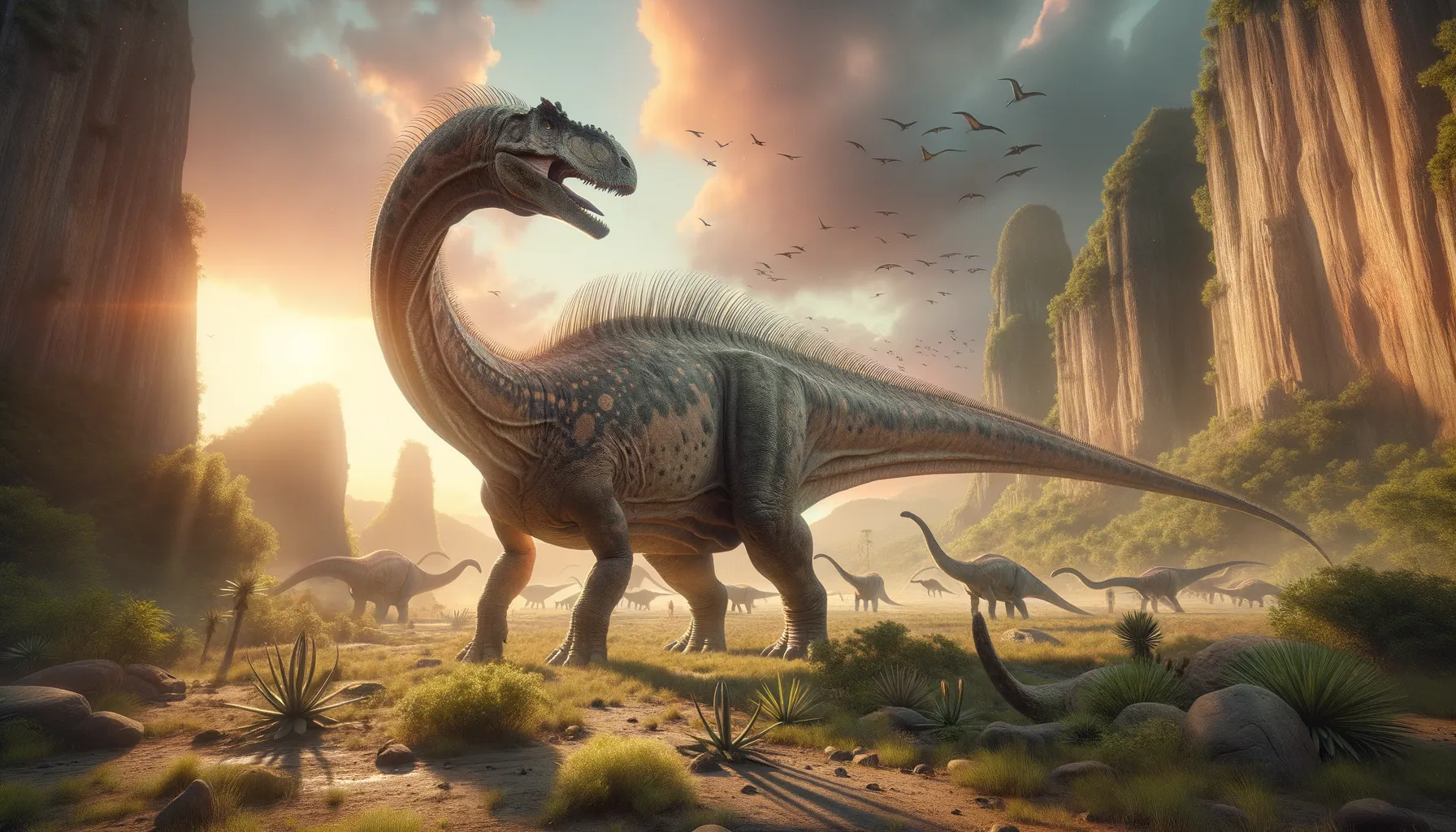
Laplatasaurus
Gentle giant of the Cretaceous plains.
Period
Cretaceous
Length
Approximated at about 68 feet long.
Height
Roughly about 10 feet tall at the shoulder.
Weight
Estimated around 20 metric tons.
Laplatasaurus was a gigantic herbivorous dinosaur that roamed the Earth during the Late Cretaceous period. Found primarily in South America, this titanosaur was renowned for its elongated neck and tail, contributing to its massive length. It belonged to a group of sauropods, which are known for their impressive size and plant-eating habits. Its fossil discovery has provided valuable insights into the diversity of sauropods in prehistoric ecosystems.
Diet
Laplatasaurus was a herbivore, mainly feasting on plants. It consumed large quantities of vegetation, using its long neck to reach leaves high in trees and foliage closer to the ground.
Hunting
As a plant-eater, it didn't engage in hunting. Instead, it likely migrated to areas abundant in food, grazing peacefully in herds to ensure ample intake of nutritional leaves and branches.
Environmental challenges
Laplatasaurus faced climatic changes that could alter the availability of its plant food sources. Natural habitat fluctuations, like forest density changes, would have impacted its feeding patterns. They were also susceptible to droughts, which could drastically reduce food supplies. Competition with other large herbivores might have presented additional challenges in sourcing ample vegetation.
Speed
Relatively slow, due to its massive size.
Lifespan
Could reach up to 70-80 years.
First discovery
Described in 1927 by Friedrich von Huene in Argentina.
Fun Facts
- Laplatasaurus was a giant herbivorous dinosaur whose name means 'Lizard of La Plata', named after the region in Argentina where it was discovered.
- This dinosaur lived around 90 million years ago during the Late Cretaceous period.
- Laplatasaurus was a sauropod, part of a group characterized by long necks, long tails, and massive bodies.
- It is believed that Laplatasaurus could reach lengths of up to 20 meters, making it one of the larger sauropods.
- Despite its enormous size, Laplatasaurus likely traveled in herds for protection against predators.
- Fossil evidence suggests that Laplatasaurus had bony armor, providing both defensive capabilities and an intriguing look.
- The first remains of Laplatasaurus were discovered in the early 20th century, showing how paleontology continues to uncover ancient secrets.
Growth and Development
Young Laplatasaurus grew at a rapid rate to reach their enormous adult size. Their growth involved developing strong bones and muscles to support their massive bodies. They likely led a highly mobile lifestyle as juveniles to evade predators. Gradual and consistent growth was crucial, relying on a rich diet of plentiful vegetation.
Habitat
Laplatasaurus dwelled in floodplains and richly vegetated areas, offering plenty of food. These regions provided the optimal environment for its grazing lifestyle. The warm and humid climate supported a lush habitat, ideal for its survival. Dense plant life also offered protection for younger individuals from predators.
Interaction with other species
Laplatasaurus likely coexisted with other herbivorous dinosaurs, sharing similar food sources. It may have been prey to large theropods, using its size as a primary defense mechanism. Its communal lifestyle could have included mixed herds with other sauropods, contributing to a complex ecosystem dynamic.
Natural lifespan
Laplatasaurus could naturally live up to several decades if not threatened by predators or disease.
Reproduction
Laplatasaurus likely laid eggs in nests to nurture embryos in a safe environment. Parental care might have included guarding the nest sites from predators. The hatchlings would have been relatively independent from birth, growing rapidly to join the adult herds. Reproduction would have been synchronized with seasonal food abundance to ensure maximum survival chances for the young.
Social behaviour
Laplatasaurus might have lived in herds for protection and efficient foraging. Social behavior would include communication through body language and possibly vocal sounds. The herd structure allowed for cooperative defense strategies against predators. Their social dynamics could involve both competitive and cooperative interactions among members.
Fossil locations
Laplatasaurus fossils have been predominantly found in Argentina, South America. These discoveries provide crucial information on sauropod dispersion across the continent. The fossils have been vital in understanding the diversity of the sauropod group. Sites in South America continue to offer new insights into its life and times.
